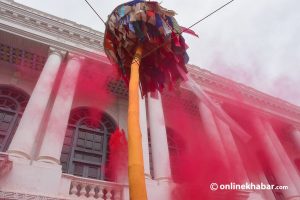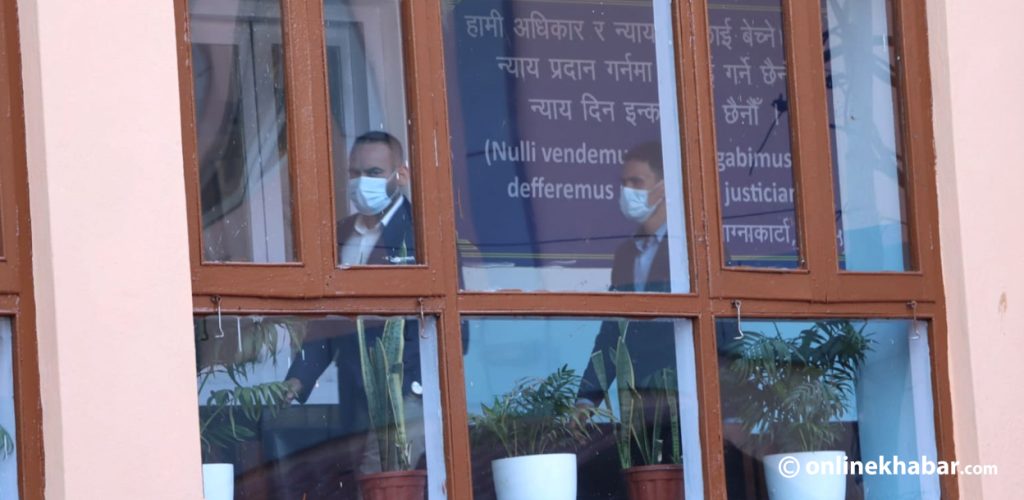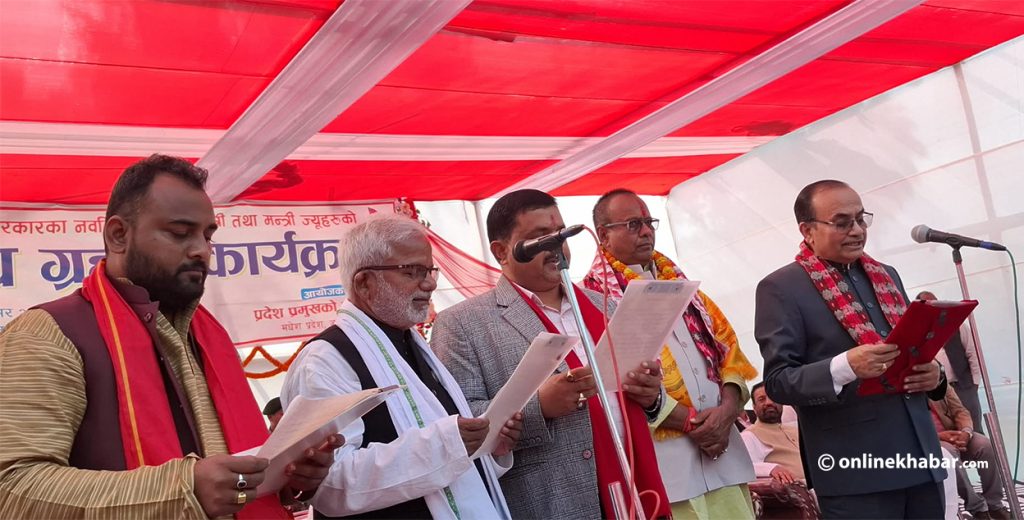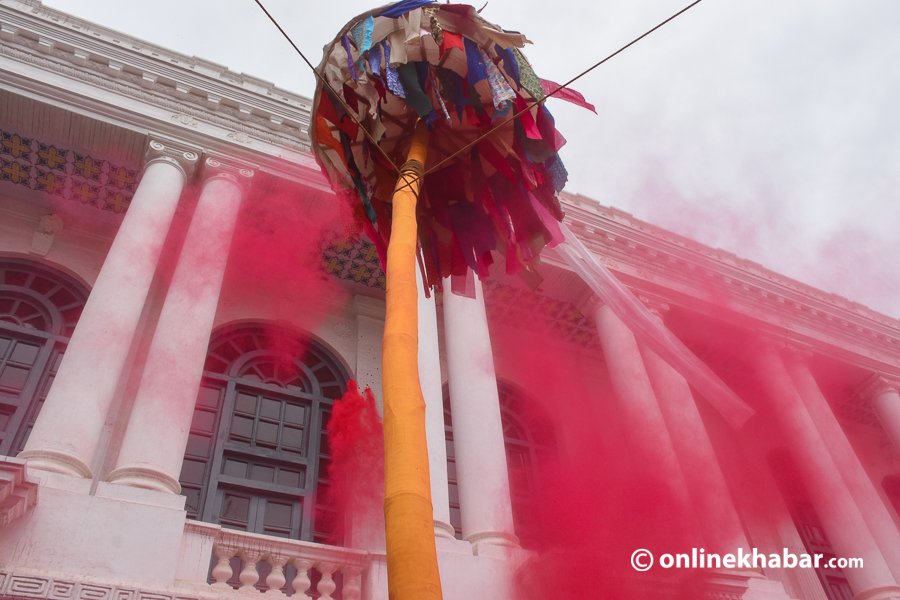
At 7:57 am on Tuesday, March 3, 2020, some hundred people will be gathering at Basantapur to erect a wooden pole, named Chir, to mark the beginning of the annual festival of Holi/Phagu Poornima.
Whereas the wooden pole heralds the spring festival every year, for a community in Ason of Kathmandu, it is an embodiment of a centuries-old tradition. The local Manandhars have been continuing the ritual every year since time immemorial, with slight modifications in between.
The community
This group of people is better known as Dhaalasiko Manandhars, who get this identity for being the residents near a dhaale (pomegranate) tree that was previously present in the area.
Every year in the month of Phalgun, the group gears up to work together to bring the Chir. The Chir is erected on Ashtami (the eighth day of the waxing moon in Phalgun) and it is taken down in the evening of the full moon (on the main Holi day) and burned in Tundikhel, to mark the end of the festival for the year.
During ancient times, Manandhars have been said to be architects, informants, and oil extractors. It is believed that King Gunakamadev had given them the responsibility to make, decorate and put up as well as down the Chir.
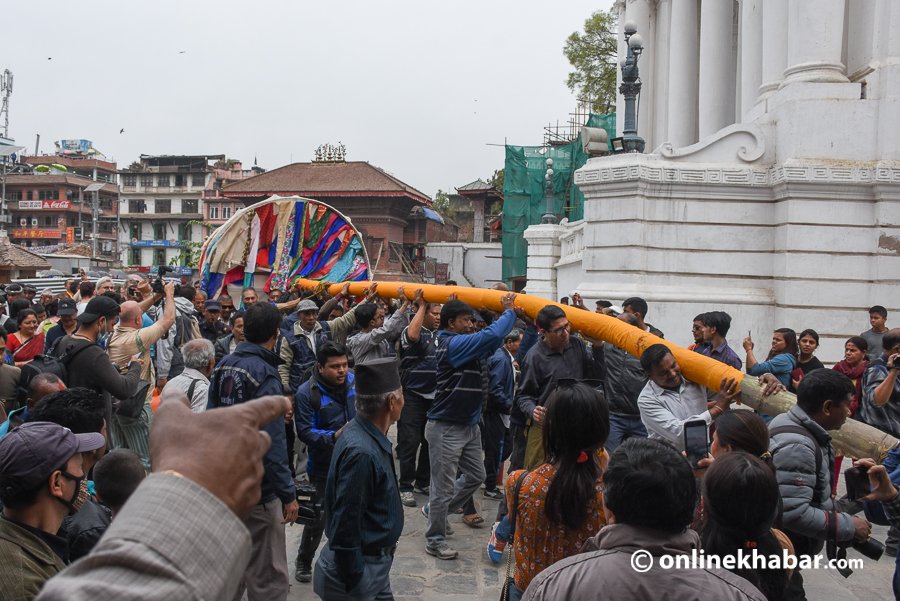
Today, the community has formed a registered committee as Dhaalasikwo Manandhar Sana:gu Khala to carry out the ritual.
The tradition and modifications
Manandhars claim that, during the Malla period, the Chir used to be erected at Mohan Kaji Chok of Hanumandhoka, not where it is erected these days. The Chir used to be about two to three feet high. It is believed that the tradition to place Chir near Gaddi Baithak, as we know today, was introduced by King Prithvi Narayan Shah, shares Madan Manandhar, a member of Dhaalisikwo Manandhar Sana:gu Khala.
“Once, the Chir used to be erected at four places, one at the Hanumandhoka gate, second at Mohan Chok inside the Hanumandhoka premises, another at Gaddi Baithak and the last one at Narayanhiti Palace. But after the king exited from the palace (in 2008), we only put the Chir at two places now: one at Basantapur and another at Hanumandhoka,” says Manandhar.
Nevertheless, the pole and the tradition of erecting it have remained the same during different periods, according to them. Its basic features are the same. For example, since a long ago, the Manandhars have been erecting a particular type of bamboo as the Chir. They bring a 32-foot long and six-inch thick bamboo pole from a forest near the Kathmandu Valley with the help of the Nepal Army.
The second component that has not changed is the three-tier umbrella-like structure that is placed at the top of the pole. The structure is made up of bamboo, wires and clothes. Another group of people from Damai community is responsible to cut and sew the cloth pieces for this and Dhaalasikwo Manandhars put and tie the structure on the pole and decorate the bamboo with a pitambar (yellow cloth).
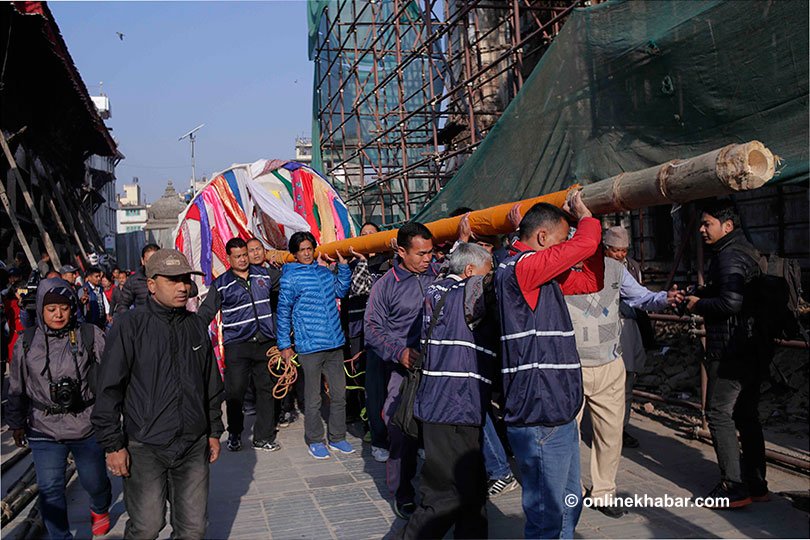
The third component is a branch of dhaale (pomegranate or mayal) tree that goes on the top of the umbrella structure. The branch is brought from a forest near Guhyeshwari of Kathmandu. One part of the branch is taken back to the Guhyeshwari temple for puja after a salute by the Gurjuko Paltan. The second part is taken to the Gorakhnath temple in Mrigasthali. Another part of the branch is brought to Basantapur where the priests install it on the umbrella on the auspicious time.
Since the festival was started and promoted by the rulers in the past, the state has been giving a separate fund to the Dhaalasikwo Manandhar Sana:gu Khala to host the festival in an organised manner. Since 2010, the Kausi Tosha Khana, an office under the Financial Comptroller General Office, has been allocating Rs 48,000 per year for the festival.
Myths and messages
‘Chir’ basically translates to cloth, so the meaning of the ceremony is to put up the clothes. The story behind the tradition comes from the stories of Lord Krishna. Lord Krishna is well-known for his mischievous behaviours. Once, near the bank of Jamuna, where the gopinis were taking a bath, Krishna reached there and, using a bamboo pole, picked and put up all the clothes of the women and started throwing colours at them. So the Chir ceremony today symbolises the same with the festival of colours, informs Madan Manandhar.

Another story that popularly relates to Holi is the story of Vishnu-devotee Prahlad, a son of King Hiranyakashyapu, who was made to sit on a pyre with Holika in an attempt to kill him. However, he came out of the fire unharmed whereas Holika, who had supposedly got a blessing to be untouched by fire, died. So, this is a festival of victory of innocence over conspiracy and cruelty. Burning Chir at Tundikhel is a symbol of Holika ‘dahan’ (burning). Likewise, the victory of Lord Ram over Rawan or good over evil in Ramayana is also related to the story.
Meanwhile, another version of the story explains why they take the Chir to Tundikhel. According to the story, Keshchandra Aaju was a rich local of Itumbahal with a habit of gambling. When he lost his riches to gambling, he started being ill-treated even by his sister. He could not take it, and went to a jungle where he met the demon Gurumaapa, who tried to eat him. Aaju pleaded with the demon to leave him and, in return, promised to give him as much food as he wanted. He was set free to eat everything people leave on their roofs, but the demon started eating children too. After this, the demon was taken to Tundikhel and given the promised food. So now, with the Chir, they also take food for Gurumaapa. And after the Chir is burned, the people also play Holi with the ashes.
For the dahan, the Chir will be dragged along the Basantapur-Makkhan-Indrachok-Wotu-Mahaboudhha-Dhughabahi-Tundikhel route by the Manandhar community [with the help of Nepal Army]. This year, the auspicious time for the ceremony has been set at 7:11 pm on Monday, March 9, the day of Holi with the time for Chir dahan set at 8:51 pm.
The Chir dahan ritual is connected to the Marwadi community also. According to Mahabir Prasad Ghiraiya, a member of the Marwadi Sewa Samiti’s ad-hoc committee, his community has been facilitating the process of burning the Chir since 1953. Before that, the Manandhars were doing it, but they handed over the task to the Marwadis upon their request. He feels, “It is an opportunity for us to bond with the Newari and Nepali communities alike.”
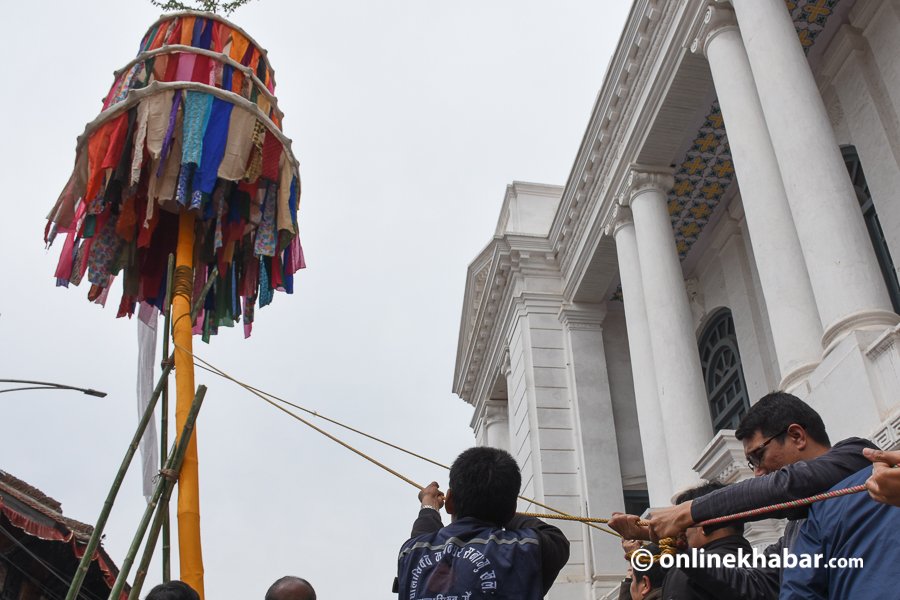
According to Ghiraiya, the event holds a special place in the community. “Every year, it is an integral ceremony for the newlyweds of the community. They take rounds and offer alms to the fire for a prosperous married life.”
The Chir at Tundikhel is burned along with guintha (cow dung) and ghee. “As the seasons change, the fire and smoke that comes out acts as a disinfectant to kill the harmful components and insects in the environment, so it is very scientific. The heat and fire are also good for the body to warm up,” adds Ghiraiya.
The Chir is believed to be a symbol of prosperity, and unfortunately, if anything happens to it, it is believed that some disaster will follow. There is no concrete connection, yet Madan Manandhar remembers that the Chir was broken after a taxi hit the pole in the year 2015. Shortly after a few months, Nepal was struck by the massive magnitude-7.6 earthquake.










